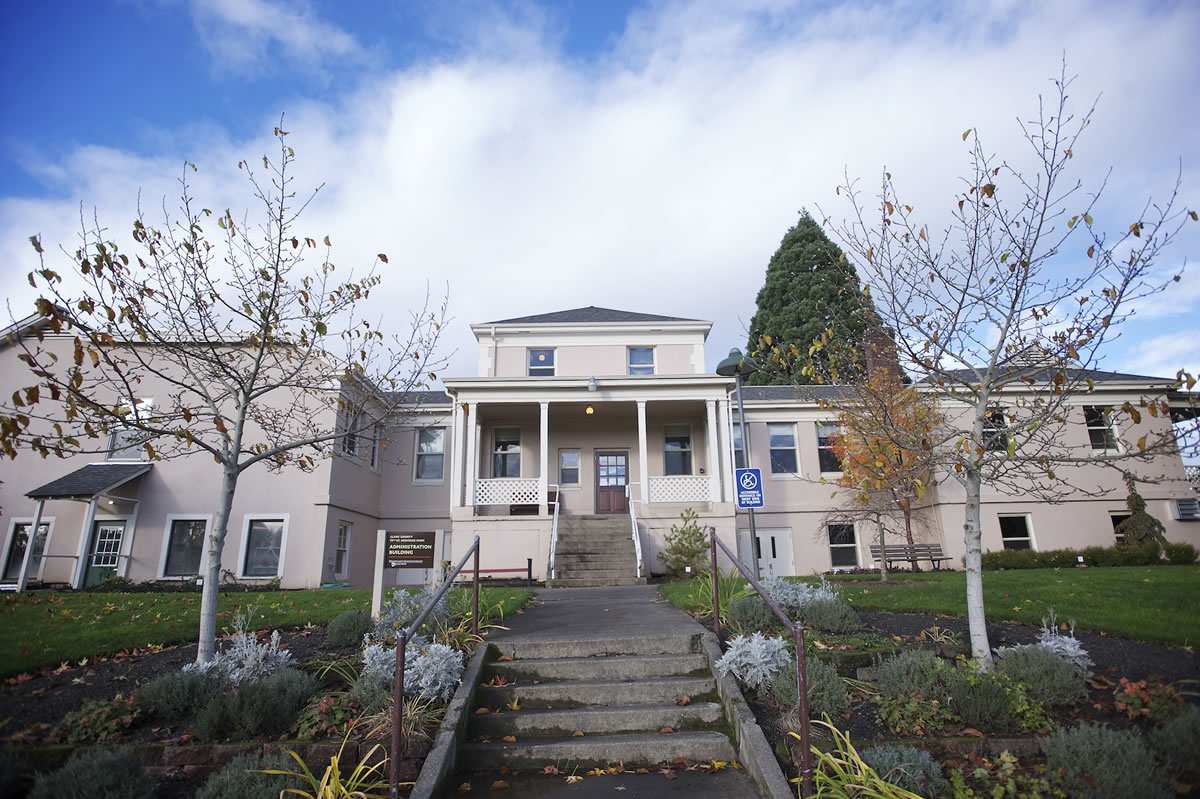When the beige Hazel Dell landmark was built in 1926, there were no national discussions about saving Social Security or funding Medicare. Those elements of the social safety net didn’t exist.
What we had was the county poor farm: the last refuge for people with no other means of survival.
The two-story building and its surrounding acreage have taken on other duties in the last 86 years and the property now is known as the 78th Street Heritage Farm.
The 99-acre site’s original role was commemorated this month when the Clark County Poor Farm was approved for listing in the Washington Heritage Register.
“The poor farm in Clark County is the best and most intact example of the poor-farm system in the state,” said Michael Houser, architectural historian with the state’s Department of Archaeology and Historic Preservation. “It is the first — and most likely the only one — to be listed” in the state register.
According to the nomination document, the site illustrates how counties shouldered the job of caring for the poor before the federal government took on the responsibilities of social welfare.
The public face of the site — the administrative center at 1919 N.E. 78th St. — was built in 1926 in a scaled-down Italian Renaissance style, along with a nearby milking house and a garage. The
style was commonly used for government buildings, according to the nomination form, because it “evokes a sense of responsibility, orderliness, and prosperity.”
The nomination also has been forwarded to Washington, D.C., with a request for the poor farm to be listed in the National Register of Historic Places.
“The review at the Keeper of the National Register takes about 60 days. So we should hear something after the new year, around the second week of January,” Houser said.
The historic designation also recognizes the second phase of the property’s public life, as home of the Southwest Washington Experiment Station. It was one of seven state-operated agricultural extension centers implemented in the middle of the 20th century “to aid individual counties with agricultural research and development,” according to the nomination form.
Washington State University scientists and other researchers used the farm to develop and test crops including berries, melons and Christmas trees. Local farmers were able to learn about disease control, fertilizers and irrigation.
The property returned to the county in 2008 and today the administration building houses the WSU Clark County Extension office. While the poor farm was phased out in the 1940s, the acreage still helps hungry people in the community. Several nonprofit groups grow produce that is donated to local food banks.
While the listing defines 1913 to 1943 as the poor farm’s period of historic significance, the county operated a poor farm on the property as early as 1873.
The oldest remaining resource is a cemetery that dates to 1913, said Jacqui Kamp, with the county’s community planning department.
The nomination form indicated that the property served 16 poor-farm inmates — as they were called — in 1898. Thirteen inmates were listed in the 1920 census, all between the ages of 53 and 88.
The farm population must have picked up during the Depression. In 1936, a Columbian story reported that the county poor farm housed 28 indigent old people, down from an average of 32 a year earlier in the decade.
The poor farm’s cemetery is the final resting place for about 200 people who died between 1913 and 1937. Not all of them were associated with the poor farm; many were transients or people whose relatives couldn’t pay burial expenses at other local cemeteries.
Tom Vogt: 360-735-4558; http://www.twitter.com/col_history; tom.vogt@columbian.com.




